There are many books and articles that focus on the Holocaust, one of the most horrific events in history which nearly eliminated all European Jewish communities.
However, Jewish history is as rich and diverse a field as any other world religion and there are many fascinating accounts of one of the most enduring people’s religion and culture.
We’ve compiled this list of books to give you a broader overview of the diverse and multifaceted history of the Jewish people. These books cover Jewish history from throughout time and space, from East to West and from ancient to modern times.
So dive into one of these Jewish history books to discover more about the beautiful and eventful history of this religion and culture and
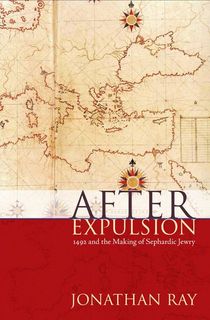
After Expulsion
In 1492, the expulsion of Spain’s Jewish people ended more than 1,000 years of prosperity, culture, and intellectualism that the community had fostered. Jewish people were suddenly forced to leave the only home they had known for generations.
After Expulsion traces the many migration paths of the Jewish people forced to leave Spain as they resettled over the course of the 16th Century. Jonathan Ray illuminates how Sephardic Judaism came to be and the impact of the development of that new cultural identity.
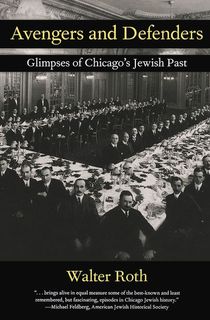
Avengers and Defenders
In this book, Walter Roth offers a far reaching exploration of the history of Judaism in Chicago. Jewish people have been in Chicago as far back as the 1840s and Roth takes readers through the many entertaining, harrowing, and impactful events from the community’s history.
He also discusses the impact the Jewish community had on business in the city, by focusing on leading business figures from throughout Chicago’s history who were also Jewish. Lastly, he also speaks on the Jewish impact on science and culture in Chicago. This is an enlightening history of a long standing American Jewish community.
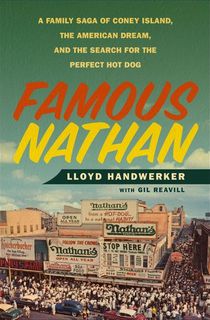
Famous Nathan
Nathan Handwerker, a Jewish immigrant from Eastern Europe, arrived at Ellis Island not speaking any English, with only a dream of success in America and $25 hidden in his shoes. In 1916, Nathan began selling his frankfurters at Coney Island for five cents a piece.
This is the story of how a man from the humblest of beginnings worked hard and grew the famous Nathan’s Hotdogs brand that we all know today. Written by Nathan’s own grandson, this book, filled with colorful characters and scenes of a lost time, tracks the trials and tribulations Nathan Handwerker faced and overcame to succeed.
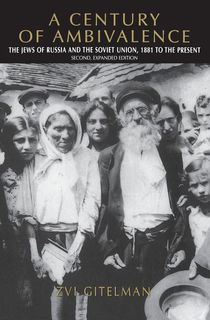
A Century of Ambivalence
This expansive history details the story of Russian Jewish life from a time of prosperity and creativity in the late 19th century to confusion and uncertainties after the fall of the Soviet Union. With photos from the archives of the YIVO Institute for Jewish Research, readers can learn about the upward and downward social and economic mobility the Jewish people of Russia have persisted through and their role in many important events in Russian and world history. Zvi Gitelman covers every change and challenge the Russian Jewish people have faced leading up to their current situation and future fate.
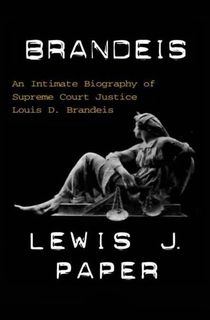
Brandeis
Supreme Court Justice Louis D. Brandeis is one of the most interesting and inspiring figures from American History. The son of Jewish immigrants, Brandeis was born and raised in 19th century Kentucky. Brandeis rose to recognition as “the people’s attorney,” the first public interest attorney who truly fought for the voiceless. In 1916, he made history by becoming the first Jewish Supreme Court Justice, still one of only eight today. This book explores the personal and professional lives of a truly remarkable man.

Scattered Among the Nations
This “beautifully presented book on Jewish diversity around the world” explores the farthest reaches of the Jewish diaspora (The Jerusalem Post). In their research, the authors visited 30 countries across five continents to speak to members of even the most isolated Jewish communities. From the plains of Africa to the Bene Israel of India, where a handful of shipwreck survivors put down their roots, this eye-opening book reveals the faith and resilience that binds together the Jewish people.

Outwitting History
In the latter half of the 20th century, the Yiddish language was increasingly falling into disuse. To the assimilated children of Jewish immigrants, books in Yiddish were meaningless and unintelligible. But to graduate student Aaron Lansky, they represented an entire body of Jewish literature and cultural history—an irreplaceable link to the past that was in danger of being lost forever.
Related: The Mesmerizing History Behind 4 Endangered Languages
In 1980, Lansky began to collect these books, rescuing them from attics, basements, demolition sites, and dumpsters so that they could be preserved and studied. His project ultimately saved 1.5 million Yiddish volumes. At once “a detective story, a profound history lesson, and a poignant evocation of a bygone world,” Outwitting History shares this remarkable true story (The Boston Globe).
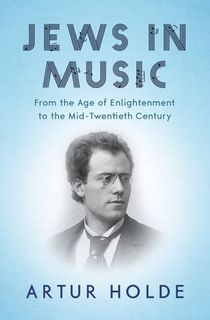
Jews in Music
Jews have made major contributions to art and culture on a global scale, and music is no exception. This authoritative work of history chronicles the work of Jewish musicians, composers, and musicologists from the early 19th century to the mid-20th century. Examining everything from European touring violinists to Broadway musicals to the traditional songs that can be heard at synagogues, this in-depth book covers every aspect of Jewish participation in secular and religious music alike.
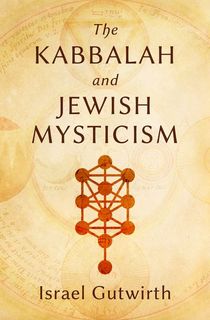
The Kabbalah and Jewish Mysticism
In recent years, the Kabbalah—a school of thought in Jewish mysticism—has piqued the interest of people both within and outside the faith. With the help of original Jewish texts and other source material, acclaimed Torah scholar Israel Gutwirth breaks down the Kabbalah and dispels popular misconceptions about it. Learn about towering early figures of Jewish mysticism and how their influence ultimately came to shape the religion with this compelling read.
Related: The 10 Best Historical Virtual Tours from Museums to Ghost Towns
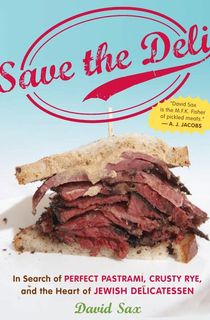
Save the Deli
In this travel memoir, self-proclaimed delicatessen connoisseur David Sax recounts his globe-trotting quest for the best hot pastrami sandwiches, matzo ball soup, and crusty rye bread that money can buy. Along the way, he examines the history of the deli and the cuisine it serves. Save the Deli isn’t just a culinary travelogue—it’s a cultural history and the story of the Jewish diaspora all rolled into one.
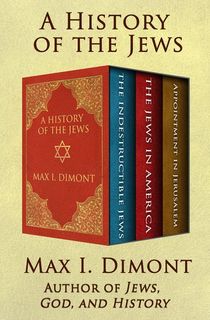
A History of the Jews
In three volumes, Dimont builds a rich and comprehensive portrait of the cultural and religious history of the Jewish people.
The Indestructible Jews traces the 4,000-year journey of the Jewish people to evoke a proud heritage while offering a hopeful vision of the future. The Jews in America offers an overview of Judaism in the United States from colonial times to 20th-century Zionism. Finally, in Appointment in Jerusalem, Dimont uses the Bible to explore the mystery surrounding whether Jesus was the Christian messiah or a member of a Jewish sect.
Related: 10 Illuminating Medieval History Books
Through countless expulsions and migrations, various waves of immigration, Dimont recounts the cultural achievements and attitudes of American Jews, creating a thoughtful and fascinating account which offers fresh insights into questions that have surrounded Jewish history and religion for centuries.
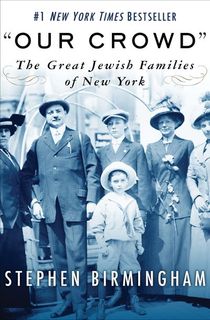
"Our Crowd"
Based on letters, documents, diary entries, and intimate personal remembrances of family lore, Birmingham constructs an engrossing portrait of opulent upper-class Jewish-American life over two centuries. He focuses on the bankers, brokers, financiers, philanthropists, and business tycoons who started with nothing and turned their family names into American institutions, despite the Gentile establishments which barred their inclusion due to their religion and backgrounds.
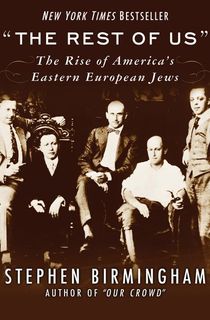
"The Rest of Us"
Jewish immigrants from Russia and Poland fleeing pogroms and persecution were considered barbaric, uneducated, and too steeped in the traditions of the “old country” to be accepted by the more refined and already well-established German-Jewish community in America. These refugees were tough, though, and before you knew it they were moving up the ranks from New York’s ghetto to Hollywood. Here, Birmingham turns his attention from the established upper crust to the rest of the Jewish-American population.
Birmingham profiles a range of unforgettable descendants of these passionate and determined refugees, including radio pioneer David Sarnoff, makeup mogul Helena Rubinstein, Hollywood tycoons Samuel Goldwyn and Harry Cohn, Broadway composer Irving Berlin, and mobster Meyer Lansky to create a treasure trove of fascinating “rags-to-riches” success stories that celebrate the indomitable spirit of a unique community.
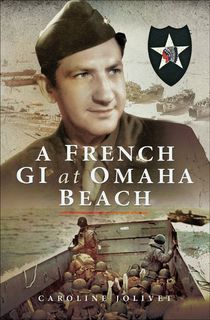
A French GI at Omaha Beach
Bernard Dargols’s granddaughter recounts the gripping life of her grandfather, who joined a foreign army to free his beloved homeland from tyranny. The thoroughly researched and thrilling account details Dargols’s beginning as a young Parisian student working in New York when the war broke out in 1939. While his family remained in France and was threatened by the Vichy regime’s anti-Semitic laws, Bernard enlisted in the U.S. Army to fight the occupying forces. Following grueling military training, a position as interpreter and translator for the Military Intelligence Service, and involvement in the liberation of Normandy, Dargols became a member of the American counter-espionage service until his discharge in 1946.
Related: Jewish Resistance Fighters Pulled Off the Largest Prison Escape of WWII
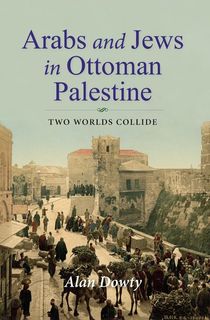
Arabs and Jews in Ottoman Palestine
The beginning of the Arab-Israeli conflict is subject to debate, with 1967, 1948, and 1922 being thrown around as potential start dates. However, Alan Dowty asserts the earliest roots of the conflict trace back to the Ottoman Empire in the 19th century, when Arab residents hostilely viewed Jewish settlers as European foreigners. Through thorough, balanced research, Dowty demonstrates that Jewish settlers had tremendous incentive to minimize all obstacles to settlement, and that events that occurred over 125 years ago shaped the implacable conflict plaguing the Middle East today.
Related: 10 Epic Medieval Battles That Shaped History and the World's Borders
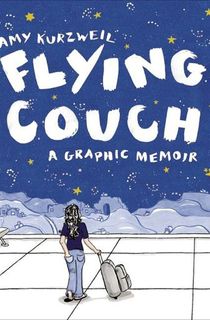
Flying Couch
Amy Kurzweil is a young Jewish artist; her mother, a psychologist; and her grandmother, Bubbe, a World War II survivor who escaped from the Warsaw Ghetto by disguising herself as a Gentile. In order to cope with Bubbe’s captivating history, Amy taught herself to draw to capture the entwining voices and histories of herself and her predecessors. Through these three wise, hilarious, and very different women, Amy uses Bubbe’s real testimony to create a portrait which investigates the legacy of trauma, the magic of family stories, and the meaning of home that will have you laughing out loud and crying in the corner.
Related: The Courageous Acts of Resistance That Led to the Warsaw Ghetto Uprising
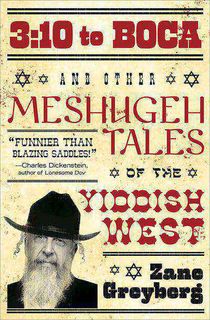
3:10 to Boca
In a zany but original tale, Zane Greyberg offers humorous stories about fake Jewish legends of the Wild West, such as Davy Chronsky and Henny Young Moon. Find out how the Jews tamed the American frontier. Get acquainted with Jewish Indian tribes like the Mishagossi or Grossinga who would never scalp on the Sabbath. For the first time, the stories of brave, rugged Jews with big dreams and even bigger shmeckels is being told, so you’d better pay attention. Fans of Mel Brooks will appreciate this silly, yet illuminating take on Jewish tales.

Understanding the Palestinian-Israeli Conflict: A Primer
In very straightforward prose, Bennis answers all your burning questions about Israel, Palestine, the U.S.’s relation to the Middle East, Zionism, anti-Semitism, the Oslo peace process, the election of Hamas to the Goldstone Report and the Palestinians' UN initiative. Together, her explanations provide a comprehensive understanding of the longstanding Palestinian–Israeli conflict.

Ancient Jewish Magic: A History
From the Second Temple to the rabbinic period, Bohak seeks to reconstruct a balanced historic picture on the cultural make-up of ancient Jewish magic. Based both on ancient magicians' own compositions and products in Aramaic, Hebrew and Greek, the place of magic within Jewish society, contemporary Jewish attitudes to magic, and the identity of its practitioners is explored. Special attention is paid to the processes of cross-cultural contacts between Jews and non-Jews, as well as to inner-Jewish creativity. The book seeks to explain the methodological underpinnings of all sound research in this field, and to highlight areas where further research is likely to prove fruitful.

Mothers and Children: Jewish Family Life in Medieval Europe
Baumgarten draws on a rich trove of primary sources to produce an analytically detailed and deeply researched contribution to our understanding of the most basic building block of medieval Jewish communities—the family.
Concentrating on the special roles of mothers and children during the period of childhood from birth to age seven in Germany and northern France during the High Middle Ages, her study covers nearly every aspect of home life and childrearing, including pregnancy, midwifery, birth and initiation rituals, nursing, sterility, infanticide, remarriage, attitudes toward mothers and fathers, gender hierarchies, divorce, widowhood, early education, and the place of children in the home, synagogue, and community within the context of a Christian society.
This post is sponsored by Open Road Media. Thank you for supporting our partners, who make it possible for The Archive to celebrate the history you love.



